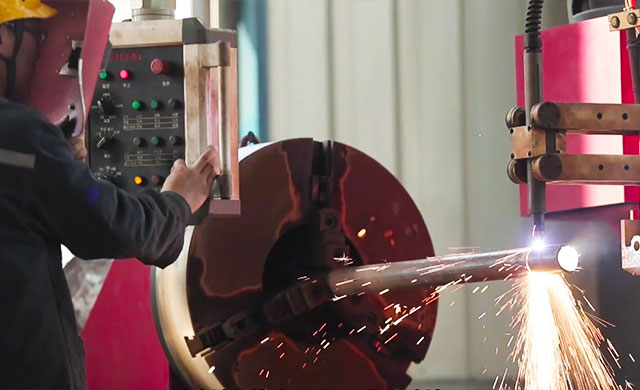
Dec . 04, 2024 09:23
Back to list
Understanding Gas Pressure Regulation with Reducing Valves for Safe System Operation
Understanding Gas Pressure Reducing Valves
Gas pressure reducing valves (PRVs) are critical components in various industrial, commercial, and residential applications involving the use of gas. These valves play a vital role in ensuring that gas is delivered safely and efficiently at the correct pressure for a variety of uses. This article provides an overview of gas pressure reducing valves, their functionality, applications, and the importance of proper maintenance.
What is a Gas Pressure Reducing Valve?
A gas pressure reducing valve is a device that reduces the pressure of gas from a high-pressure source to a lower, usable pressure. This is essential in systems where the gas is generated or supplied at a high pressure, which is often too high for safe and efficient use in appliances or equipment. The primary function of the PRV is to maintain downstream pressure within a specific, predetermined range, ensuring that devices using the gas operate effectively without the risk of damage.
How Do Gas Pressure Reducing Valves Work?
The operation of a gas pressure reducing valve is based on the principles of physics and fluid dynamics. At its core, a PRV consists of several key components the valve body, a diaphragm or piston, a spring mechanism, and adjustment controls.
1. Inlet and Outlet Ports The incoming gas flows through the inlet port into the valve body.
2. Diaphragm or Piston As the gas enters, it acts on a diaphragm or piston that moves in response to pressure changes. This movement triggers the opening or closing of the valve to regulate gas flow.
3. Spring Mechanism A spring applies a counteracting force to the diaphragm. The tension of the spring can be adjusted to set the desired downstream pressure.
4. Pressure Regulation When the pressure on the downstream side drops below a certain level, the diaphragm moves downward, causing the valve to open wider and allow more gas to flow in. Conversely, if the pressure rises too high, the diaphragm moves upward, reducing the gas flow by partially closing the valve.
This dynamic mechanism allows gas pressure reducing valves to maintain a consistent pressure output despite variations in gas demand or inlet pressure.
gas pressure reducing valve

Applications of Gas Pressure Reducing Valves
Gas pressure reducing valves have diverse applications across various sectors
- Residential Heating Systems PRVs are widely used in residential natural gas systems to ensure that gas stoves, heaters, and water boilers receive gas at a safe operating pressure.
- Industrial Processes In industrial settings, PRVs regulate the gas supply for processes that require precise pressure control, such as in chemical manufacturing or food processing.
- Commercial Kitchens Restaurants depend on PRVs to safely control the pressure of gas fed to cooking appliances, ensuring consistent performance and safety.
- Fuel Supply Systems PRVs are also used in fuel cell systems, gas turbines, and other energy applications where gas needs to be delivered at specific pressures.
Importance of Maintenance
Regular maintenance of gas pressure reducing valves is crucial for safety and efficiency. Over time, dirt, debris, and wear can affect their performance. A malfunctioning PRV can lead to unsafe pressure levels, potentially resulting in gas leaks or equipment failures. Routine inspection, testing, and servicing are recommended to ensure that valves are functioning properly. This includes cleaning the valves, checking the spring tension, and confirming that all seals are intact.
Conclusion
Gas pressure reducing valves are essential for the safe and efficient operation of gas systems in a wide range of applications. By regulating gas pressure, these valves protect equipment, enhance safety, and ensure smooth operations. Understanding how PRVs work and their significance in our daily lives can lead to better usage and maintenance practices. Proper care and timely servicing of these valves are crucial in safeguarding against potential hazards while maximizing the efficiency of gas systems. In an era where energy safety is paramount, gas pressure reducing valves undoubtedly play an indispensable role.
Latest news
-
Safety Valve Spring-Loaded Design Overpressure ProtectionNewsJul.25,2025
-
Precision Voltage Regulator AC5 Accuracy Grade PerformanceNewsJul.25,2025
-
Natural Gas Pressure Regulating Skid Industrial Pipeline ApplicationsNewsJul.25,2025
-
Natural Gas Filter Stainless Steel Mesh Element DesignNewsJul.25,2025
-
Gas Pressure Regulator Valve Direct-Acting Spring-Loaded DesignNewsJul.25,2025
-
Decompression Equipment Multi-Stage Heat Exchange System DesignNewsJul.25,2025

